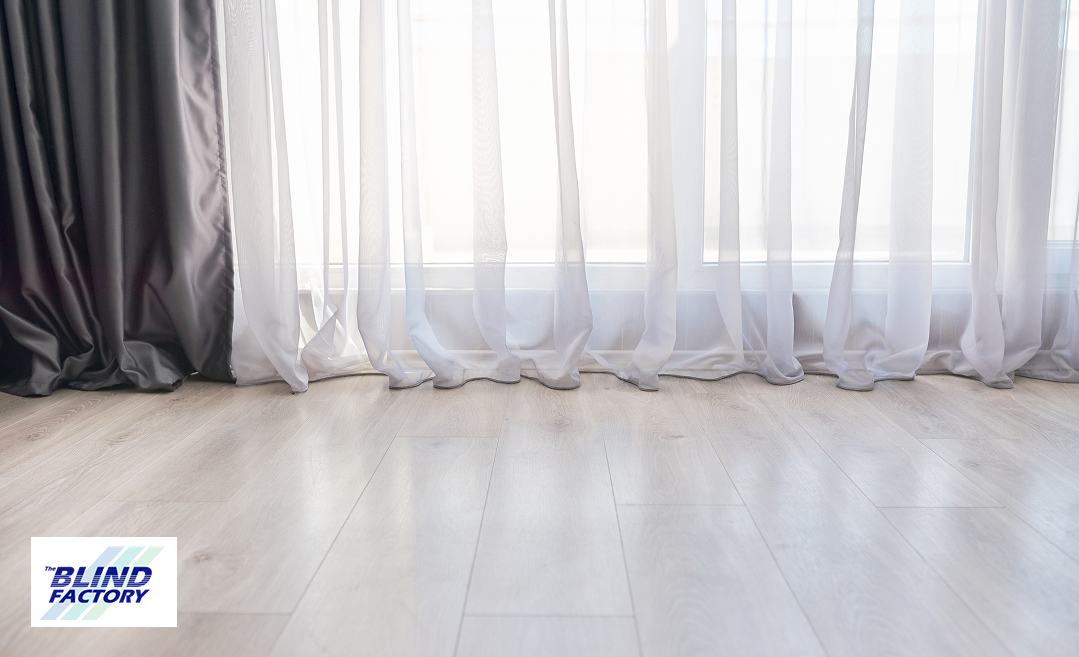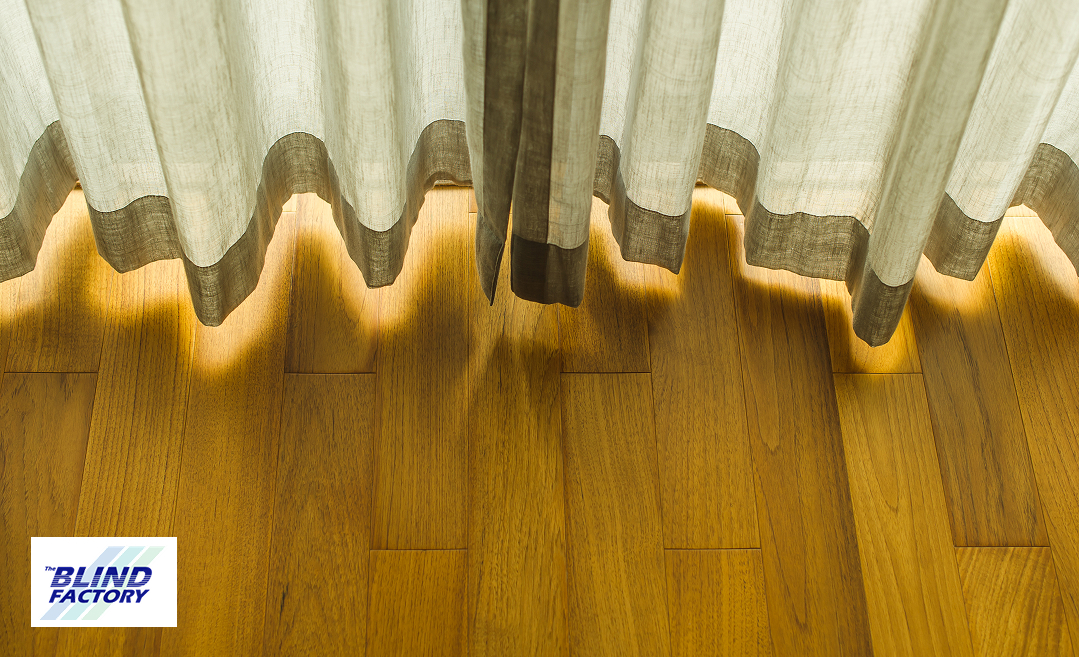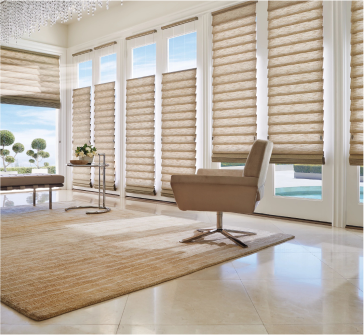You’ve just hung your new curtains, stepped back to admire your handiwork, and something feels…off. They’re either floating awkwardly above the floor or pooling in fabric puddles that seem excessive. Sound familiar?
That brings us to one of the most frequently asked questions in interior design, should curtains touch the floor? While it might seem like a simple yes-or-no question, the reality is beautifully complex. The right curtain length can transform your space from ordinary to extraordinary, while the wrong choice can throw off your entire room’s balance.

The Short Answer: It Depends on Your Goals
Before we dive deep into the details, here’s the honest truth: there’s no universal “right” answer to whether curtains should touch the floor. The ideal curtain length depends entirely on your room function, personal style, and practical needs.
Generally speaking, you have three main options to consider. Floor-length curtains create a sophisticated, finished look that works beautifully in formal spaces. Shorter curtains offer practicality and work well in high-traffic areas or modern, minimalist designs. Then there’s the middle ground—curtains that lightly graze the floor or sit just above it.
Your room’s style, ceiling height, and how you use the space should all factor into your decision. A formal dining room might call for elegant floor-length drapes, while your kitchen window above the sink might be better served with shorter curtains that won’t interfere with daily tasks.

The Case for Floor-Length Curtains
Let’s start with why floor-length curtains have become the gold standard in interior design. When your curtains touch the floor, they create an unbroken vertical line that draws the eye upward, making your ceilings appear higher than they actually are. This visual trick is particularly valuable in rooms with standard 8-foot ceilings, where every inch of perceived height matters.
Floor-touching curtains also make your windows appear larger and more impressive. Instead of creating a visual break between the window and floor, long curtains establish a continuous flow that enhances the overall proportions of your space. This is especially effective in living rooms, where you want to create a sense of grandeur and sophistication.
From a practical standpoint, floor-length curtains provide superior light control. If you’re using blackout curtains for better sleep or privacy, longer panels ensure there are no gaps at the bottom where light can sneak through. This complete coverage is essential for shift workers, parents with young children, or anyone who values a truly dark room.
Interior designers consistently recommend floor-length curtains because they create that polished, professionally designed look that shorter curtains simply can’t match. The continuous line from ceiling to floor creates a sense of luxury and intentionality that elevates any room’s aesthetic.
When it comes to fabric selection, floor-length treatments work beautifully with both natural fibers and synthetic fabrics. Heavier materials like velvet or thick cotton create impressive puddles, while lighter fabrics like linen or silk flow gracefully to the floor without overwhelming the space.

When Shorter Curtains Make Sense
Despite the popularity of floor-length treatments, shorter curtains definitely have their place in thoughtful home design. In high-traffic areas where people frequently walk near windows, shorter length curtains eliminate the risk of tripping or catching heels on fabric hems.
Window placement often dictates when shorter curtains are the smarter choice. Windows positioned above kitchen sinks, radiators, or built-in furniture simply work better with curtains that end at or just below the window sill. Nobody wants their beautiful window treatments dragging in dishwater or blocking heat circulation.
The room function plays a crucial role in determining the right length. Bathrooms, kitchens, and utility areas often benefit from shorter curtains that are easier to clean and won’t absorb moisture or cooking odors. These practical spaces prioritize function over formal aesthetics.
For those embracing a modern look, shorter curtains can contribute to a clean, minimalist aesthetic. When paired with sleek curtain rods and contemporary fabric choices, shorter panels create crisp lines that complement modern furniture and architectural elements.
Maintenance considerations also favor shorter curtains in certain situations. They’re easier to take down for cleaning, less likely to collect dust and pet hair, and generally require less careful handling during routine care.
Related Article: Top 10 Trends For Blinds and Curtains in 2025
The Three Professional Length Options Explained
Professional window treatment installers typically work with three distinct length categories, each serving different aesthetic and functional purposes.
Break Length
These curtains are designed to lightly graze the floor with just a slight bend or “break” in the fabric. This length provides the elegant look of floor-length treatments while maintaining a clean, tailored appearance. The fabric should touch the floor gently without creating excess pooling—think of how well-tailored pants should hit your shoes.
Kiss Length
These curtains just barely touch the floor, creating a clean line without any fabric bending or pooling. This length works particularly well in modern spaces where you want the sophistication of floor-length treatments without any visual weight at the bottom. It’s also an excellent choice for lighter fabrics that might look awkward with extra fabric.
Puddle Length
These curtains feature extra fabric that pools gracefully on the floor, typically adding 2-6 inches of additional material. This luxurious look works beautifully in formal spaces like dining rooms or master bedrooms, where the extra fabric creates a sense of opulence and grandeur. However, puddle length requires careful consideration of room function—you don’t want puddles where people frequently walk.
The key to achieving any of these lengths successfully lies in precise measurement and proper installation. A half inch can make the difference between elegant and awkward, which is why many homeowners choose to work with professional installers for their window treatments.
Factors to Consider When Choosing Curtain Length
Several important factors should influence your curtain length decision beyond simple aesthetic preference. Ceiling height plays a crucial role—rooms with high ceilings can handle longer curtains and even dramatic puddle lengths, while standard-height ceilings might be overwhelmed by too much fabric.
Your room’s style should guide your choice. Traditional and formal decorating styles typically call for longer curtains, while contemporary and casual spaces often work well with shorter treatments. Consider your existing furniture and decor when making this decision.
Natural light needs vary significantly from room to room. Bedrooms might benefit from floor length blackout curtains for optimal sleep, while dining rooms might prioritize the elegant appearance of long drapes over light control functionality.
Fabric type affects how curtains hang and behave at different lengths. Natural fibers like linen and cotton have beautiful drape qualities but may wrinkle more at floor length. Synthetic fabrics often maintain their shape better but might lack the organic movement of natural materials.
Window trim and sill considerations matter more than many people realize. Deep window sills or elaborate trim work might require specific length adjustments to create the most flattering proportions.
Expert Tips for Getting the Perfect Length
Achieving the ideal curtain length starts with accurate measuring. Always measure from where your curtain rod will be installed, not from the top of the window frame. Most designers recommend hanging curtain rods 4-6 inches above the window frame and extending them 3-4 inches beyond each side of the window for optimal proportions.
When measuring for floor-length curtains, account for the type of floor covering. Hardwood floors require different measurements than thick carpeting or area rugs. A professional tip: measure to the floor, then subtract a quarter inch to ensure your curtains don’t drag or bunch.
Common mistakes include choosing curtains that are too short (which creates an unfinished look) or too long without intentionally creating a puddle effect (which appears sloppy rather than luxurious). When in doubt, err slightly on the longer side—you can always hem curtains shorter, but adding length requires more significant alterations.
For DIY installations, invest in a quality level and take multiple measurements across the window width. Floors aren’t always perfectly level, and this attention to detail will ensure your curtains hang beautifully.
Don’t forget to consider how wide your curtains should be as well. For a full, tailored look, your curtain panels should be 1.5 to 2.5 times the width of your window, depending on the fabric’s thickness and the level of fullness you want to achieve.
Finding Your Perfect Length
The question of whether curtains should touch the floor ultimately comes down to your specific space, needs, and personal style preferences. Floor-length curtains offer undeniable elegance and visual impact, while shorter treatments provide practicality and suit certain room functions perfectly.
Consider your room’s purpose, your family’s lifestyle, and your decorating goals when making this decision. Remember that the “rules” of interior design are really guidelines meant to help you create spaces that feel harmonious and intentional.
Whether you choose floor-length drapes that puddle luxuriously or shorter panels that provide clean, modern lines, the most important thing is that your window treatments serve your needs and make you happy every time you enter the room. After all, the best curtain length is the one that makes your house feel like home.

